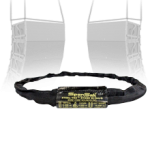Our office is closed on Monday April 29th & Tuesday April 30th for Passover
How do I get a Laser Variance, or a "Laser Drivers License?"
Acquiring your Laser Show Variance with UNO Laser is actually quite easy. You must have a variance in order to produce any live laser displays using UNO Lasers. Simply follow the link here to the Online Variance Request Form, and is only required to be filled out once, not for every show. Just as when you have a driver's license, you can drive any car, as long as that car is legally registered and inspected. The variance application process with electronic signature should only take a few minutes.
UNDERSTANDING LASER VARIANCE WITH UNO LASERS:

What is a Laser "Class?"
First, we need to understand what level of Laser we are dealing with. All lasers are classified into different groups called "classes" distinguished by the hazard they present based on the emitted power of the laser, the wavelength, human accessibility and other parameters. These classes are I, II IIa, IIIa, IIIb and IV for the United States, and 1, 1M, 2, 2M, 3R, 3B and 4 for Europe, which indicate the level of radiation emmision danger produced by each unit.
|
|
There are certain laws and protections in the United States that the Food and Drug Administration (FDA) is responsible for, and certifying manufactured laser products & licensing Laser Show Producers is one of their jurisdictions, and guidelines are detailed in Laser Notice number 51. In order for an Event Producer to employ a Laser Display Show at an event, they must meet certain requirements like using Certified Laser Display Fixtures for Class 3B and Class 4, and must have a valid and current Laser Show Variance (like a driver's license) to legally operate such devices in a public setting. More details can be obtained from the FDA's web page for Laser Light Shows. |
For more information about Laser Classes, see the FDA's website for Variance and Laser Class level Definitions.
What is a Laser Variance?
A "Laser Manufacturer Variance" is a special "permit" issued and regulated by the FDA (Food and Drug Administration) and the CDRH (Center for Devices and Radiological Health) which allows a product manufacturer to make and publicly distribute laser light devices in the United States. This is used to regulate and control the amount of Radialogical Exposure the general public may incur while these devices are operating in any designated venue according to the FDA guidelines for Manufacturers and distributors detailed in the FDA's Laser Notice 51.
A "Laser Light Show Variance" is the permit required for operating UNO Lasers in a public forum, and outlined in details under FDA guidelines for Laser Display Show as detailed in Laser Notice 55. If you are producing a show with laser light effects, not having a show variance could lead to large fines if your show gets inspected by FDA officials.
How do I get a Laser Variance, or a "Laser Drivers License?"
Acquiring your Laser Show Variance with UNO Laser is actually quite easy. You must have a variance in order to produce any live laser displays using UNO Lasers. Simply follow the link here to the Online Variance Request Form, and is only required to be filled out once, not for every show. Just as when you have a driver's license, you can drive any car, as long as that car is legally registered and inspected. The variance application process with electronic signature should only take a few minutes.
IMPORTANT NOTE: In order to obtain your Laser Show Variance, you must understand your new responibilites. This is not like plugging in a lamp and hitting ON. Check out our Laser Variance Training Requirements page to get the full rundown on the regulations and federal forms you'll need to be familiar with from the moment you apply for your variance!
 |
PROPER INSTALLATION OF UNO LASERS

AUDIENCE SCANNING = ILLEGAL
What is Audience Scanning, and why is it ILLEGAL?
Under the FDA's Variance Show Guidlelines, it is clearly stated that Lasers operated during public performances are to mounted in a way that projector and its beam emmisions are no lower in height than 3 meters, or 9 feet from the standing room floor.
Lasers are especially harmful to optical instruments like cameras, cell phone cams, and your own retina.



































































































